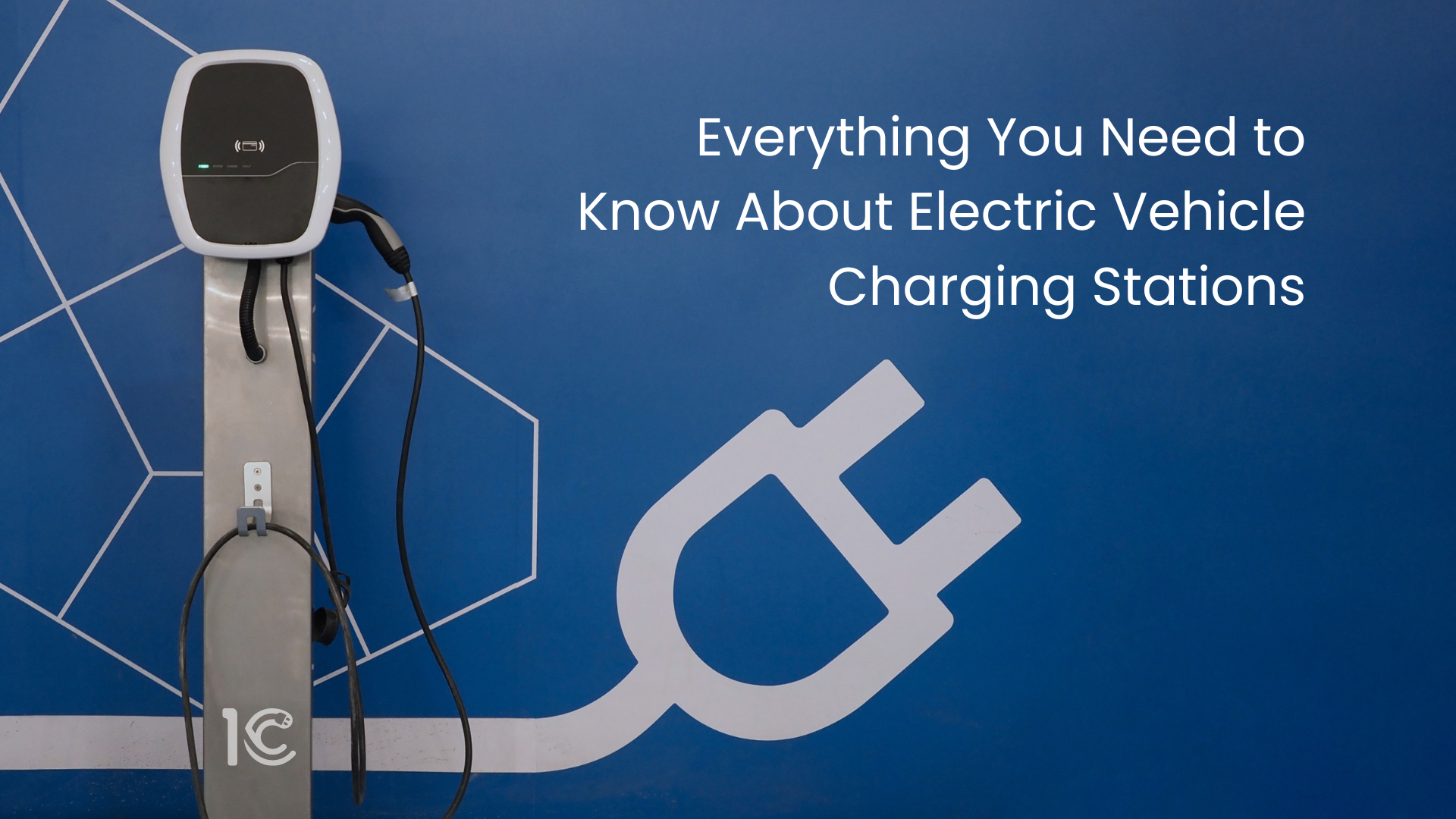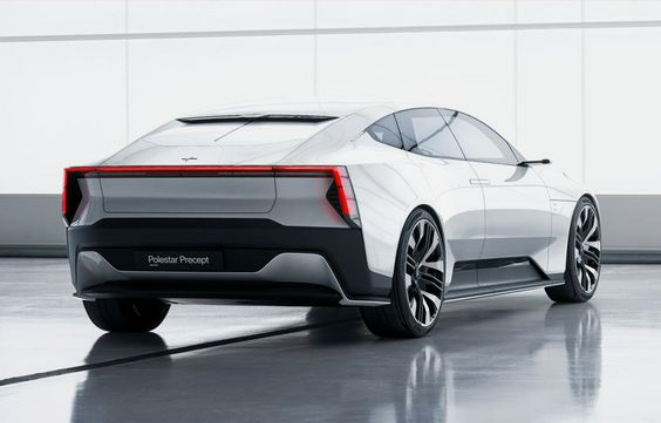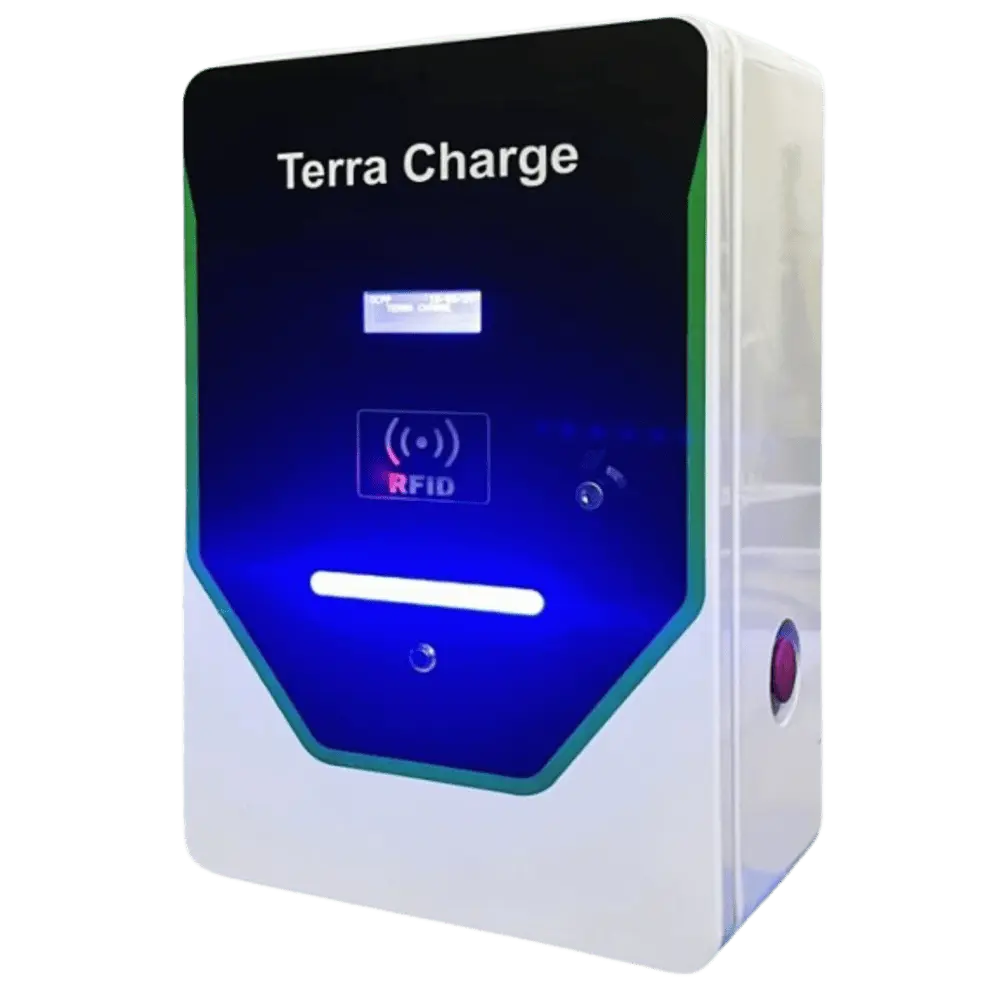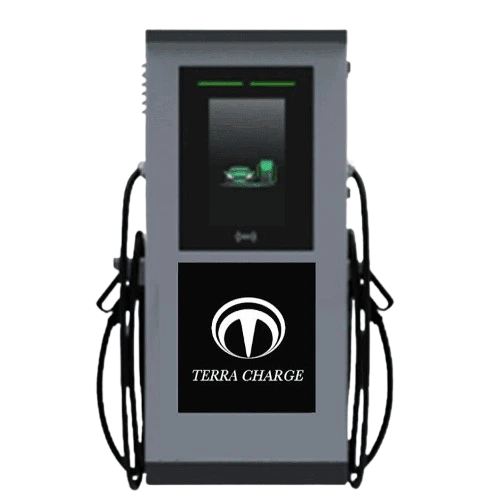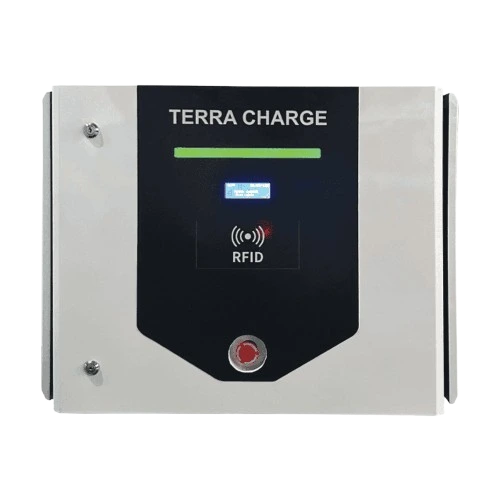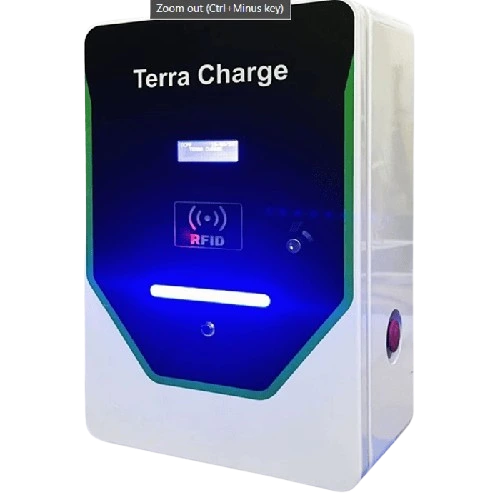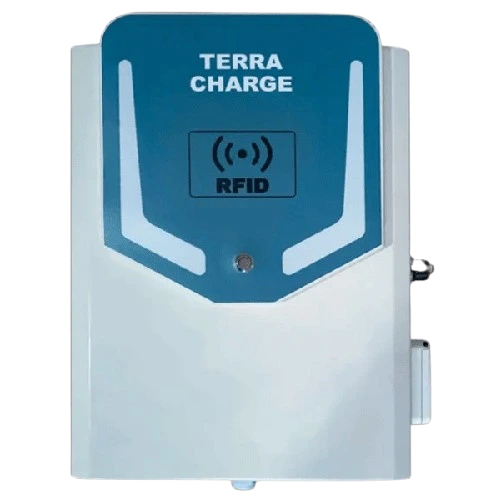Main Components of EV Chargers: Power Supply, Connector, Cables
Electric vehicle chargers are like fuel stations for electric cars, recharging their batteries. These chargers have essential parts, such as the power supply, connectors, cables, safety board, and smart features. All these work together to make charging safe and efficient. Knowing about these parts, like the types of power supply and connectors, the different charging cables, and the job of the control board, helps in using electric vehicle chargers well. Smart features, such as RFID card use, mobile app connection, and easy payment systems, make it more convenient for users to charge their cars.
What are EV chargers?
Electric Vehicle chargers are devices designed to recharge the batteries of electric vehicles. They act like fuel stations for electric cars, providing the necessary electric power to replenish the vehicle’s battery for continued use.
What Are the Main Components of EV Chargers?
The main components of EV chargers include power supply, connectors, cables, safety board and smart features.
Power Supply
The power supply is a crucial part of EV chargers. It transforms electrical power from the grid, whether AC or DC, into the proper voltage and current needed to charge the EV’s battery. This component usually has a transformer, rectifier, and control circuitry.
Types of Power Supply Used In EV Charging
There are two main types of power supplies used in EV charging:
AC Power Supplies
Level 1 and Level 2 chargers use AC (Alternating Current) power supplies. These chargers take AC power from the electrical grid and change it into the right voltage and current for charging the EV’s battery. AC chargers are commonly found in homes, offices, and public charging stations.
DC Power Supplies
Level 3 chargers, known as fast or DC fast chargers, use DC (Direct Current) power supplies. These chargers take high-voltage DC power directly from the electrical grid and turn it into the necessary voltage and current for quickly charging the EV’s battery. Level 3 chargers are typically found in public charging stations and are known for their faster charging capabilities than AC chargers.
Importance of Power Supply in EV Charging
- Power supply matters a lot in EV chargers.
- It decides how fast and well the EV gets charged.
- A strong power supply means quicker charging, but a weak one means slower charging.
- A good power supply also helps in saving energy and makes setting less expensive.
- Knowing about the power supply is essential for picking the suitable charger for an EV.
- It ensures that the charging happens in a good and money-saving way.
Connectors
An EV charger’s connector is crucial for ensuring the electric vehicle gets the needed power. It’s made up of a plug that fits into the car’s charging port and a socket. Inside these parts, some pins connect to create an electrical pathway. These pins are designed to handle high amounts of electricity without getting too hot or causing electrical problems.
Types of Connectors Used in EV Charging
Type 1 (SAE J1772)
With its five pins, this connector is commonly found in North America and Japan. It’s best suited for slower and medium-speed charging, handling up to 16 amps of power.
Type 2 (IEC 62196)
With seven pins, this connector is widely used in Europe and Australia. It can support higher power levels, up to 43 kW, making it suitable for faster charging.
CHAdeMO
This connector is distinctive and mainly used in Japan, especially for DC fast charging. Its unique “gun” shape allows it to supply electricity at a rate of up to 62.5 kW.
CCS (Combined Charging System)
The CCS connector is becoming more popular worldwide. It combines the Type 2 AC connector with two additional DC pins. This standardised connector can support charging speeds up to 350 kW.
Importance of Charging EV with the Right Connector
- Match the connector of your EV with the charging station for a safe and good fit.
- Many EVs have connectors that suit their area, but some let you change connectors with adapters.
- When picking a charging station, ensure it has a suitable connector for your EV.
- Check the power rating of both the connector and the station to be sure they match your charging requirements.
Charging Cable
The charging cable links the charging station and the EV. It carries electricity from the charging station to the EV’s battery. The quality and type of charging cable can impact how fast and well the charging happens.
Types of Charging Cable
An EV charger’s charging cable has two main parts; the connector that connects to the EV and the line itself. The cable is usually made of solid materials like copper or aluminum to handle different EVs’ weights. It’s flexible and easy to move around. There are various charging cables for EVs; the needed type depends on the vehicle’s make and model. Type 1 cables are standard in North America and Japan, while Type 2 cables are popular in Europe.
In India, EV chargers commonly use Type 2 charging cables. These cables are widely adopted in Europe and are also prevalent in India for electric vehicle charging. Type 2 connectors provide a versatile and reliable solution for connecting the charging station to electric vehicles.
Importance of Charging Cable
- The charging cable’s length and how easily it bends can make charging more accessible and safer.
- A short cable is suitable for tight spots, but a long one is needed in open or faraway places.
- If the cable bends easily, it’s simple to handle, but it might not be very tough and can get damaged.
- Picking the suitable cable for your EV and where you charge is essential.
- Using the wrong or broken cable can be unsafe and harm the EV’s charging spot.
Control Board
The control board is the brain of the charging station. It manages the charging process and ensures the EV battery is safe and efficient. A well-designed control board is essential for the reliability and safety of the charging station. It typically consists of a microcontroller, voltage and current sensors, relays, and other components.
Functions of Control Board
Managing Charging Current and Voltage
It controls the amount of electricity going to the EV battery. This control considers factors like battery condition, temperature, and capacity. This helps charge the battery properly, making it last longer and preventing damage.
Communicating with the EV
The control board talks to the EV’s computer. This communication shares information about the battery, how fast it charges, and other details. This helps the charging station adjust the charging process for each specific type of EV.
Monitoring the Charging Process
It keeps a close eye on how the charging is going. This includes checking the battery and station’s voltage, current, and temperature. The control board also spots any issues during the charging. If something’s wrong, it takes action to stop or slow down the charging to keep things safe.
Safety Importance of A Control Board
- A well-designed control board helps charge the EV battery optimally, preventing harmful situations like overcharging or undercharging that can harm the battery.
- If the control board is poorly designed, it can lead to inefficient charging and damage to the battery. This damage could reduce the overall lifespan of the electric vehicle.
- A poorly designed control board may pose safety risks, including the potential for fire or electrical shock. Choosing a charging station with a carefully crafted control board is essential to avoid these hazards.
- Opting for a charging station with a well-designed control board ensures efficient charging. This not only benefits the battery but also enhances the overall performance of the electric vehicle.
Smart Features in EV Chargers
Smart features in electric vehicle chargers bring added convenience and functionality.
RFID Card Integration
Including RFID card integration in smart EV chargers is akin to possessing a unique key. This card serves as the key, simplifying the charging initiation process. It’s not just about convenience; it adds a security layer, ensuring only authorised users can access the charging services.
Mobile App Connectivity
It allows users to check and manage EV charging directly from their phone. It provides a real-time view of your car’s charging status, akin to having a remote control for your charging station. This feature isn’t just about ease; it’s about granting you more control over your charging schedule, enhancing flexibility.
Payment Systems
Smart EV chargers streamline the payment process. Integrated payment systems mean you don’t need to carry cash or worry about intricate transactions. It’s like having a built-in cashier. This feature saves time and ensures the payment process is secure and straightforward.
Conclusion
Electric vehicle chargers play a crucial role in powering electric cars efficiently. The various components, including the power supply, connectors, cables, safety features, and smart functionalities, work together to ensure safe and effective charging. Understanding the importance of power supply types, connector variations, and charging cable considerations helps users make informed choices. The control board acts as the charger’s brain, managing the charging process for optimal battery health. Smart features, such as RFID card integration and mobile app connectivity, enhance user convenience, making electric vehicle charging a seamless and controlled experience. Choosing the right charging station with well-designed components is key for a reliable and safe charging infrastructure.
F.A.Q.s
Q1. What are the types of EV Chargers?
Electric Vehicle (EV) chargers come in various types to cater to different charging needs:
- Level 1 Chargers: Basic chargers suitable for home use.
- Level 2 Chargers: Versatile home, workplace, and public station chargers.
- DC Fast Chargers: Rapid chargers designed for on-the-go charging, commonly found along highways.
Q2. What are the types of charging cables used in EV?
Electric vehicle chargers use different types of charging cables based on the vehicle’s make and model. Common types include:
- Type 1 Cables: Standard in North America and Japan.
- Type 2 Cables: Widely used in Europe and Australia.
- CHAdeMO: Used mainly in Japan for DC fast charging.
- CCS (Combined Charging System): A globally adopted connector supporting AC and DC charging.
Related Artciels >>>
Tata Motors Growth Focus on No emission vehicle, can hybrid overcome Pure EV, what is Hybrid Vehicle?
A charging station supplies electric energy to charge vehicles, in public, workplace, commercial, residential settings, including battery swapping options.
If one rides an electric car and commutes 1000 km in India, he/she will have to install 15 different EV charging apps to charge their EV.
EV ownership in India poses challenges - limited charging, high insurance costs, and battery degradation. Collaborative efforts needed for widespread adoption.
EV is cost effective than fuel vehicle. Know the cost benefits and different methods of charging an EV at home and public spots in India 2024. Call us for Ev charging solutions.
Electric vehicles use lithium-ion batteries, produce zero tailpipe emissions, but face challenges like limited charging, cost, and battery degradation.
भारत में ईवी चार्जिंग स्टेशनों कि ग्रोथ एको-फ़्रेंडली यात्रा की दिशा में एक महत्वपूर्ण कदम है। इलेक्ट्रिक कारें चार्जिंग स्टेशनों पर रिचार्ज
Statiq's CCS2 Charger in Noida offers efficient EV charging with high-speed capabilities, contributing to a versatile and user-friendly charging experience.




